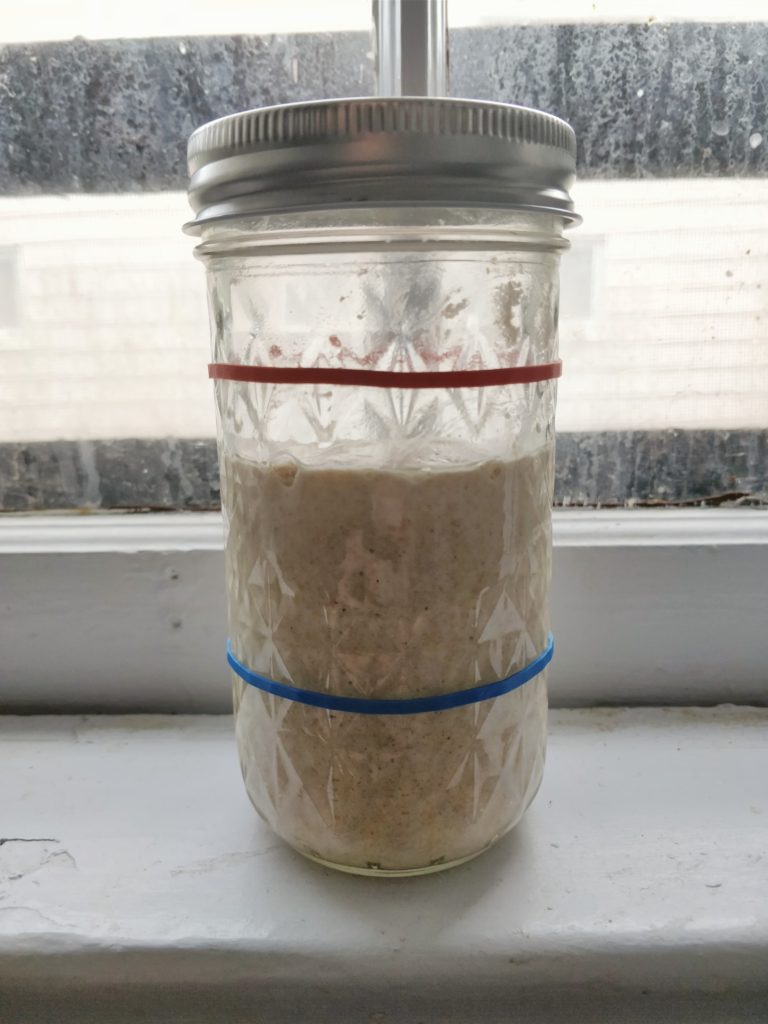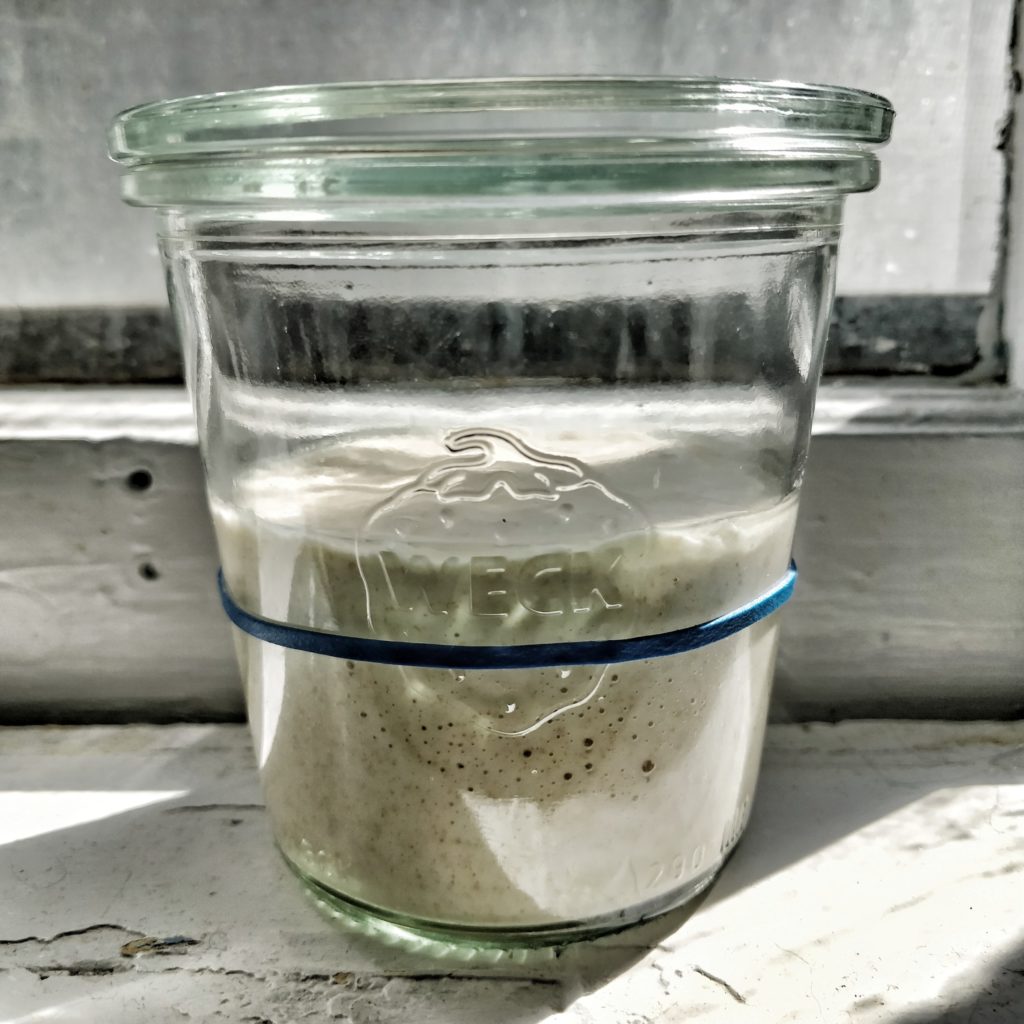Back to an All-Purpose Starter

I wrote back in May that I was transitioning my sourdough starter to whole wheat flour. Now I’m transitioning back to all-purpose!
There’s nothing wrong with a whole wheat starter, and if you use one and like it, great! After a month of trying it, there are 4 observations I’ve made about the difference that have convinced me to reverse course.
#1–Texture
Whole wheat starter has a different consistency due to the bran included in the flour. A freshly-fed whole wheat starter is much less runny than one made with all purpose, and it makes it more difficult to transfer from my little mixing bowl* to the jar. It’s a minor thing and doesn’t impact baking, but since I interact with the starter more often than I bake with it (it’s the nature of sourdough upkeep), this can get a little annoying.
#2–Sourness
My whole wheat starter is much more noticeably sour than the original all-purpose. Due to the inclusion of the bran and more of the germ of the wheat berry in whole wheat flour, there are more nutrients for other kinds of bacteria to flourish on, especially ones that produce acetic acid. And, related to #1 above, according to a paper from 2011*, “The firmer the sourdough . . . the more acetic acid is produced and the less lactic acid.” So perhaps changing the flour:water ratio to be higher in water to offset the thirstiness of the bran might reduce the sourness, but I want to keep the ratio at 1:1 for my sanity.
#3–Rise
My sourdough starter is almost 3 months old, and I don’t worry so much anymore about how much it rises on its own. At the beginning, after it started rising about 3x after feeding at a 1:1:1 ratio, I began reducing the amount of starter included in the feed until I got to the ratio I feed at now, 1:5:5 (10g starter, 50g water, 50g flour). My starter is in maintenance mode—the low inoculation allows me to control the rate at which I need to feed it (at this point, only every other day), and with such a small amount to inoculate the fresh substrate the rise is fairly slow and does not quite reach the 3x level.* I believe that the slower rise is what makes for the much less dramatic effect, and so I can’t rely on the volumetric rise to indicate healthy activity.

Part of the reason I switched to whole wheat is because the video in the original post showed a tiny difference in the longevity of the rise vs white flour. I wanted to ensure that my less frequent feeding schedule could be sustained, and I took this as a sign that whole wheat would hold up better inbetween feeds. But I’ve found that the performance of the preferment/levain is more important to a bread dough than the initial starter. My levain ratio tends to be closer to 1:1:1, and I consistently get that dramatic rise. The small potential benefit of starter rise longevity with whole wheat is outweighed for me by the last point:
#4–Discard
As I continue to maintain my sourdough, in an effort to integrate it better into my lifestyle, I keep the discard from each feeding in a jar in the fridge. I use this discard to make things like sourdough discard crepes, savory breakfast pancakes, and cheesy crackers, and I’ve been experimenting with making crumpets by adding baking soda. For me, the makeup of the starter itself is important since I use it directly to make other things besides bread, where it makes up all or at least the majority of the flour and liquid in the recipe.
So, the above observations, especially texture and sourness, means that the discard is a little intense to use directly, and I’m not as much of a fan of the denser whole wheat texture. That means I’m back to using the whole wheat flour in my pantry a lot less often than the other flours, but as long as I continue to make sourdough bread I think I’ll use it up just fine.
Update 6/22/2020: Two days later, I’ve come across this investigation into different flours for sourdough starters by Serious Eats, a website I have a lot of respect for when it comes to food. The article’s headline is absolutely click-bait, since they draw no definitive conclusions, but it’s clear that in their testing the all-purpose starter had a demonstrable effect on the rise and crumb of their test loaves. It “added the most strength to dough for a tall bake and attractive crumb structure”. It’s a small sample size, but an interesting anecdote I wanted to include here.




1 mention
1 comment
The headline of the SE article wasn’t clickbait at all to be honest.